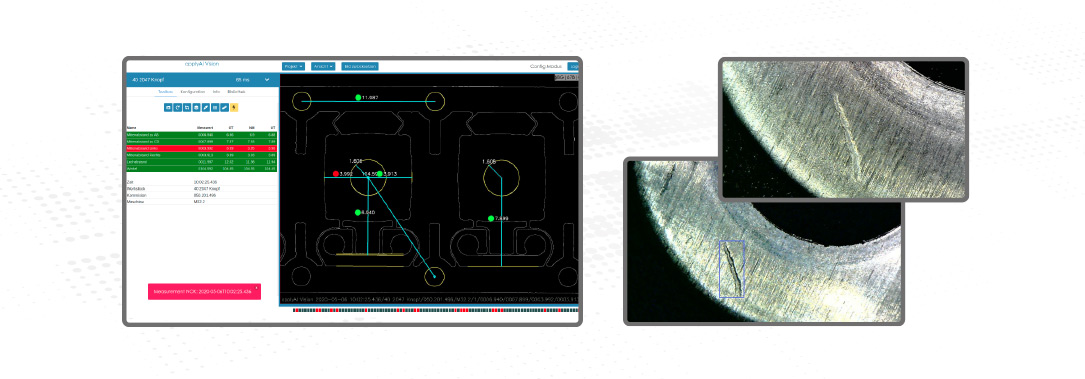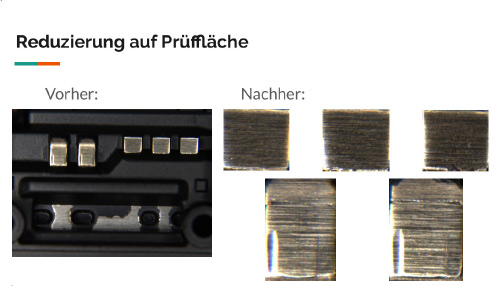Process types and application methods

The perfect interplay:
Industrial camera system with artificial intelligence
An artificial intelligence (AI) industrial camera system refers to a system that uses AI technology to analyze images or video footage captured by industrial cameras for a variety of applications, including quality control, defect detection, object detection, and tracking, to name a few. Such a system typically consists of a series of industrial cameras capturing images or video footage of a production line or other industrial process and an AI algorithm that analyzes the images in real time to detect patterns, anomalies or specific objects. The AI algorithm can be trained on a large dataset of images or videos using machine learning techniques to recognize specific objects, defects or other features of interest. After training, the algorithm can be used on the industrial camera system to enable automatic monitoring and analysis of the production process. An industrial camera system with AI has several advantages over traditional manual inspection methods, including higher accuracy, faster processing times and the ability to detect subtle defects or anomalies that may be missed by human inspectors.
Evaluation methods
Special evaluation methods:
Detection of anomalies
Evaluation methods play a decisive role in the detection of anomalies such as scratches, marks, streaks and rust. They make it possible to identify irregularities and initiate measures to rectify them. The use of special evaluation methods can significantly improve the efficiency and accuracy of anomaly detection.

Imprints:
AI-based methods for identification and analysis
Marks can come in different shapes and sizes and have different effects. For example, they can damage the surface, impair the operation of machines or cause quality problems with products. It is therefore important to identify marks at an early stage and analyze their cause. AI-based methods for identifying and analyzing marks use image processing algorithms and pattern recognition to detect and classify marks. By using deep learning, models can be trained to deliver accurate results and distinguish prints from other types of anomalies. This enables effective troubleshooting and the implementation of solutions to eliminate imprints.in anomaly detection.
Rust:
AI applications for the detection of rust damage
Rust damage can now be detected faster and more accurately. The AI applications for detecting rust damage work on the basis of image recognition algorithms. They analyze images of metallic surfaces to identify potential rust spots. They use complex pattern recognition algorithms to distinguish rust from normal surface structures. The AI systems can even recognize tiny traces of rust that are invisible to the human eye.
Scratch:
How AI recognizes and evaluates them
Detecting scratches can be a challenge as they can come in different shapes and sizes. They can also be affected by other factors such as dirt or lighting. However, AI-based methods enable precise and reliable scratch detection, regardless of external influences. AI-based scratch detection uses image processing techniques and machine learning to identify scratches in images or videos. By training models with a variety of scratches, they can learn patterns and recognize scratches in real time. This enables a fast response and the ability to repair damage at an early stage.
Schlieren:
Efficient recording through AI
Streaks on metal are optical phenomena that can occur during the machining and processing of metal. Streaks are bright lines or spots that become visible on the surface of the metal and can indicate irregularities or impurities. With the progress of artificial intelligence (AI), it is possible to automatically detect and evaluate streaks on metal. The AI-based detection and evaluation of streaks on metal is an efficient and precise method of detecting possible defects or deviations in metal processing.
